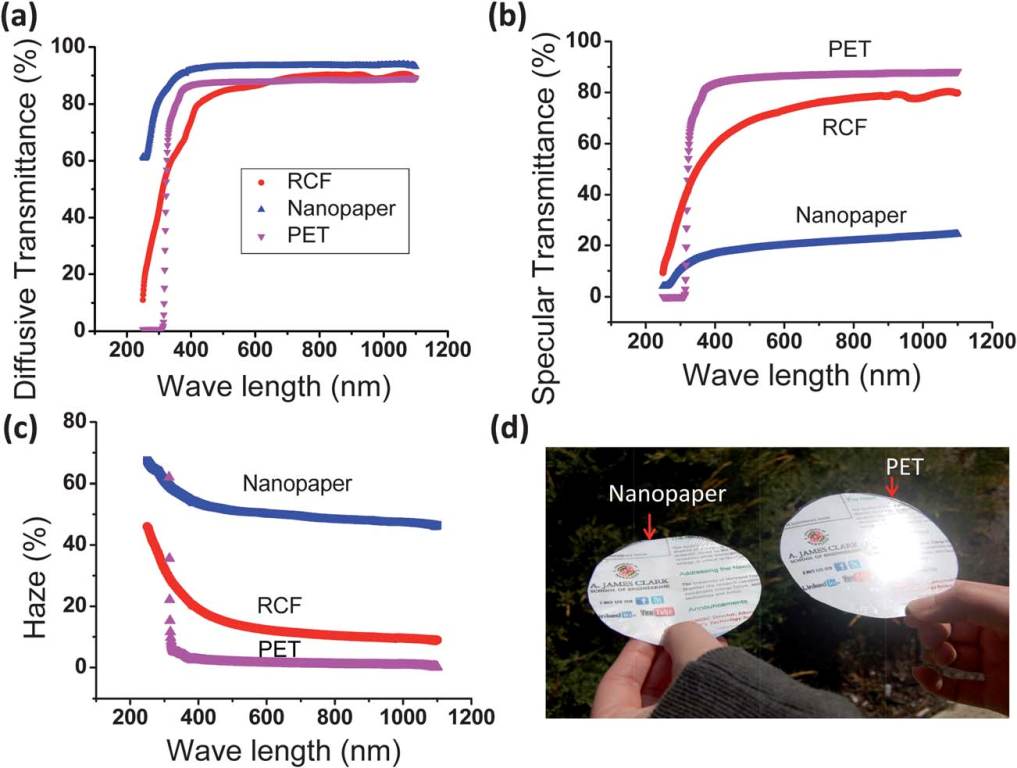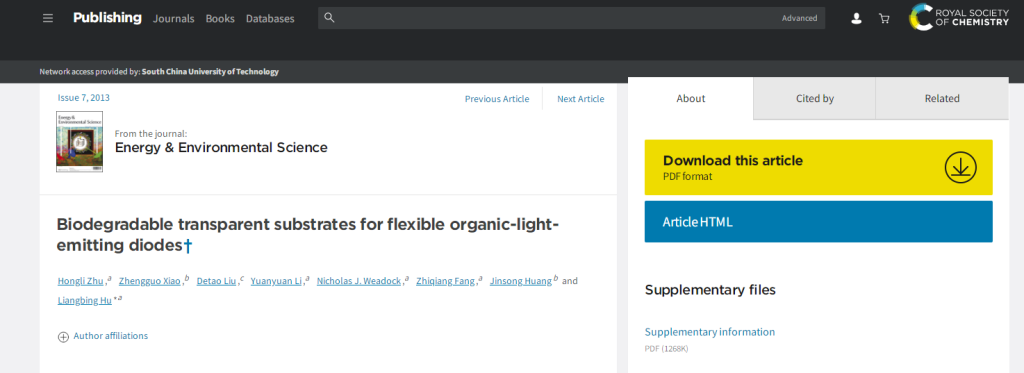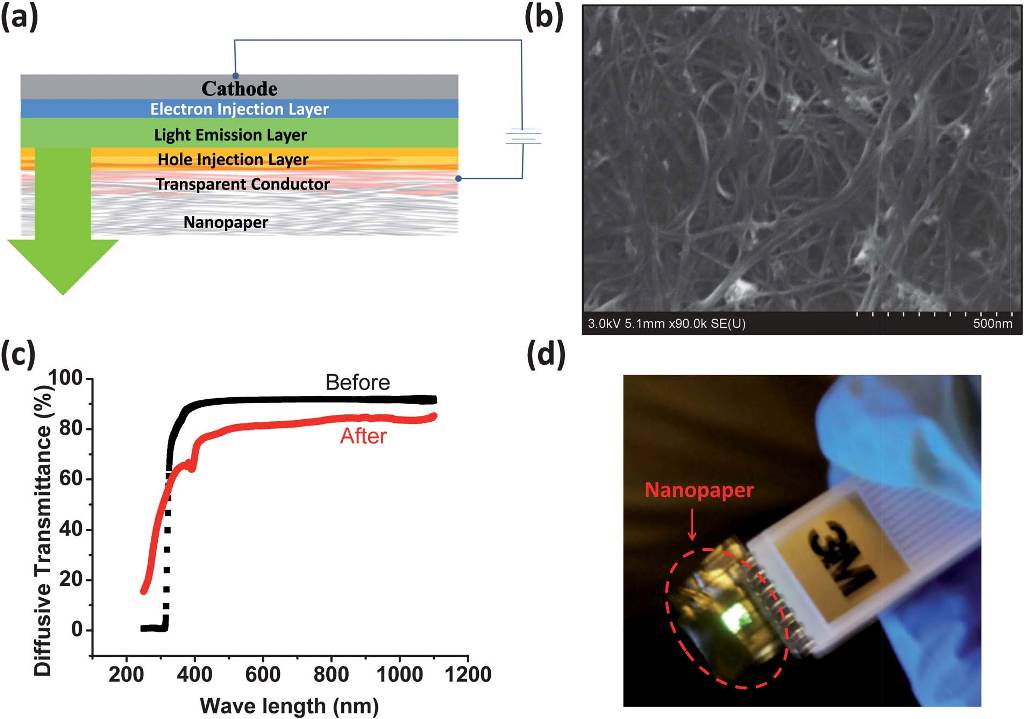Energy & Environmental Science
Biodegradable transparent substrates for flexible organic-light-emitting diodes
Hongli Zhu, Zhengguo Xiao, Detao Liu,c Yuanyuan Li, Nicholas J. Weadock, Zhiqiang Fang, Jinsong Huang and Liangbing Hu*
a-Department of Materials Science and Engineering, University of Maryland, College Park, MD 20740, USA. E-mail: binghu@umd.edu
b-Department of Mechanical and Materials Engineering, University of Nebraska-Lincoln, Lincoln, Nebraska 68588, USA
c-State Key Laboratory of Pulp and Paper Engineering, South China University of Technology, Guangzhou 510640, China
† Electronic supplementary information (ESI) available. See DOI:10.1039/c3ee40492g
Cited by: Energy Environ. Sci., 2013, 6, 2105–2111
Corresponding author: Liangbing Hu,
柔性和透明基板上的电子产品由于其新功能和高速卷对卷制造工艺而受到广泛关注。基材的性能至关重要,包括柔韧性、表面粗糙度、透光率、机械强度、最高加工温度等。尽管塑料衬底已广泛应用于柔性微电子,但仍需要下一代可持续的高性能衬底,这些衬底具有可调的光学特性和更高的处理温度。在这篇文章中,我们关注的是基于纤维素的透明、可生物降解的底物,其中包括纳米纸或再生纤维素膜(RCF)。我们发现它们的光学和机械性能都有很大的不同,这是由于它们的构建模块的不同。高柔性有机发光二极管(oled)也被展示在可生物降解的衬底上,为下一代绿色和柔性电子产品铺平了道路。
Main Contents:
Electronics on flexible and transparent substrates have received much interest due to their newfunctionalities and high-speed roll-to-roll manufacturing processes. The properties of substrates are crucial, including flexibility, surface roughness, optical transmittance, mechanical strength, maximum processing temperature, etc. Although plastic substrates have been used widely in flexible macroelectronics, there is still a need for next-generation sustainable, high-performance substrates which are thermally stable with tunable optical properties and a higher handling temperature. In this communication, we focus on cellulose-based transparent, biodegradable substrates incorporating either nanopaper or a regenerated cellulose film (RCF).We found that both their optical and mechanical properties are dramatically different due to the difference of their building blocks. Highly flexible organic-light-emitting diodes (OLEDs) are also demonstrated on the biodegradable substrates, paving the way for next-generation green and flexible electronics.

It firstly reported to fabricate flexible OLED by using nanopaper.


